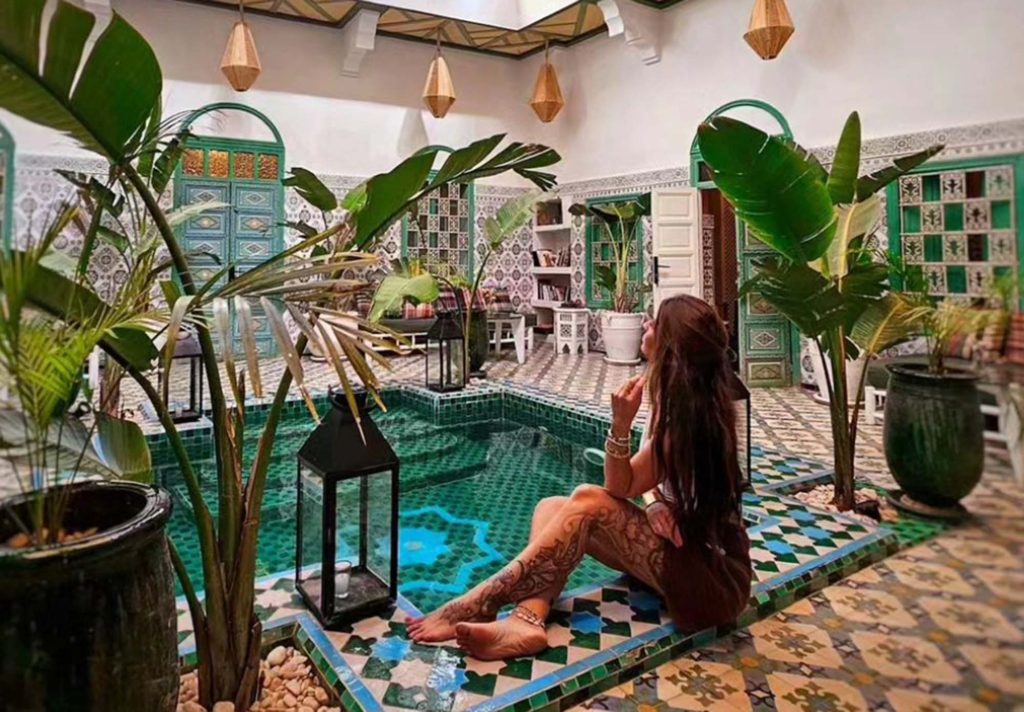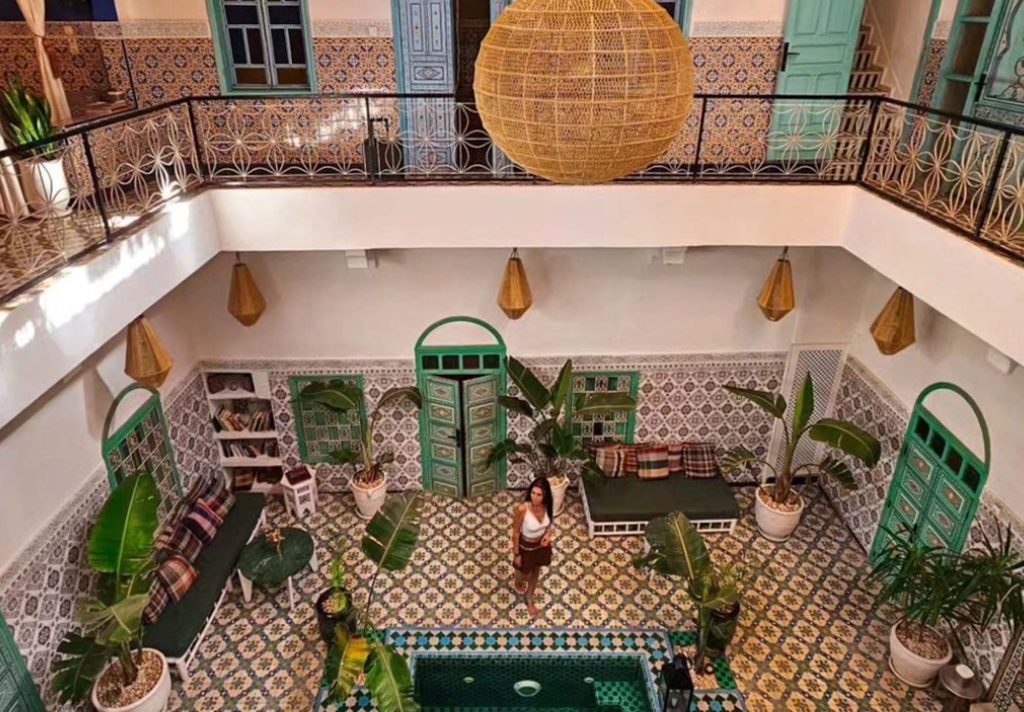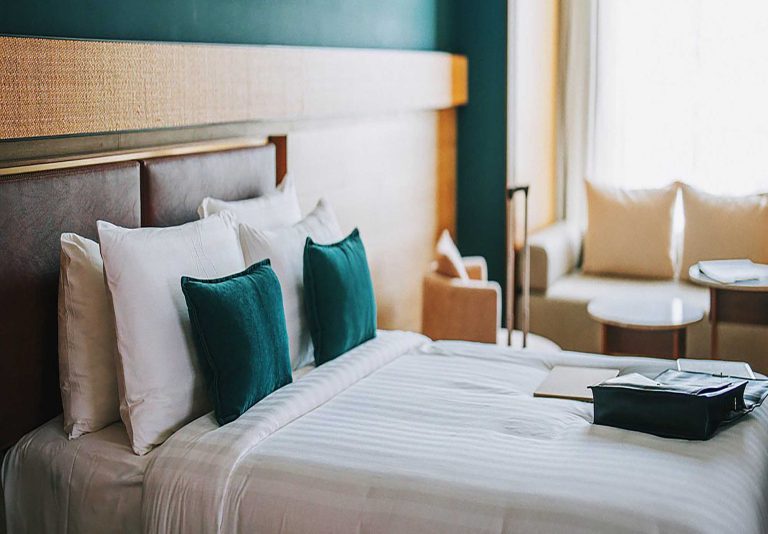Morocco, located in North Africa, is a country renowned for its rich historical tapestry, diverse landscapes, and vibrant cultural heritage. It stands at the crossroads of civilizations, shaped by a fascinating blend of indigenous Berber, Arab, African, and European influences.
With its extensive coastline along the Atlantic Ocean and the Mediterranean Sea, Morocco boasts a diverse geography that includes sweeping deserts, the majestic Atlas Mountains, and bustling cities. Its cultural mosaic is a testament to its long history, where ancient traditions coalesce with modern influences, creating a unique and captivating allure.
One of the most revered and emblematic landmarks in Morocco is the Ben Youssef Madrasa. Situated in Marrakech, this historical marvel stands as a testament to Morocco’s architectural prowess and Islamic heritage. As one of the country’s significant attractions, Ben Youssef Madrasa is a prime example of the intricate craftsmanship, intricate design, and spiritual significance inherent in Moroccan architecture. Its legacy intertwines with Morocco’s cultural narrative, offering visitors a glimpse into the country’s intellectual and artistic past.
The Birth of Ben Youssef Madrasa: A Legacy Unveiled
Dating back to the 14th century, Ben Youssef Madrasa’s genesis lies within the era of the Merinid dynasty’s reign in Morocco. Sultan Abu al-Hassan initiated its construction in Marrakech, founding this educational institute in honor of Sultan Ali ibn Yusuf. The madrasa held a significant purpose: to serve as an Islamic college, dedicated to imparting religious education and Quranic teachings.
The Significance of Madrasas in Islamic Culture
Madrasas, like Ben Youssef, occupied a central place in Islamic culture. They served as bastions of learning, not confined solely to religious studies but embracing sciences, philosophy, and literature. These institutions were instrumental in shaping intellectual and cultural facets across Islamic societies, nurturing scholars, fostering debate, and advancing knowledge.

Architectural Evolution: Tracing Centuries of History
Ben Youssef Madrasa’s architectural journey mirrors Morocco’s historical narrative. Initially constructed in the 14th-century Marinid style, subsequent dynasties, including the Saadian and Almoravid, contributed to its expansion and renovation. The madrasa’s structural evolution incorporates diverse architectural influences, blending Andalusian, Moorish, and Moroccan styles. Its intricate designs—be it the geometric patterns, stucco work, cedar woodcarvings, or zellij tilework—reflect the mastery of Moroccan artisans, showcasing a fusion of cultural aesthetics.
Throughout its existence, Ben Youssef Madrasa has stood as a testament to knowledge and spiritual enlightenment, shaping generations of scholars and artists. Its existence weaves into Morocco’s architectural and educational legacy, leaving an enduring imprint on the country’s cultural landscape.
Marvels Carved in Stone: Unveiling Ben Youssef’s Architectural Grandeur
The architectural marvel of Ben Youssef Madrasa transcends time, encapsulating centuries of exquisite Moroccan craftsmanship. Its design epitomizes the pinnacle of Islamic architecture, characterized by intricate details and ornamental finesse.
Architectural Style and Design Features
Ben Youssef Madrasa boasts the quintessential features of Moroccan architecture, reflecting an amalgamation of Islamic and Moorish influences. The central courtyard, a hallmark of Islamic architectural design, stands as the focal point, surrounded by galleries adorned with horseshoe arches, delicately carved stucco, and mesmerizing zellij tilework. The courtyard’s dimensions, meticulously proportioned, offer a harmonious balance between space and symmetry, accentuated by the play of light and shadow that dances across its adorned walls.
Building Materials, Decorations, and Ornamental Arts

The construction materials employed in this architectural masterpiece are a testament to the skill of Moroccan artisans. The walls, constructed with terracotta, ochre, and tadelakt plaster, form a canvas for the intricate decorations that embellish the madrasa. Every inch is adorned with intricate geometric patterns, calligraphy, and arabesque motifs carved into cedarwood or sculpted from stucco, creating a tapestry of visual allure.
The zellij mosaic tiling, meticulously pieced together, adorns walls and fountains with vibrant, geometric tessellations, drawing the eye into a world of breathtaking precision. The ornamental arts—fine examples of stucco, woodwork, and plaster carvings—showcase the depth of Moroccan craftsmanship, each detail a testament to the artisan’s skill and dedication.
Emphasizing Unique Elements and Artistic Details
The grandeur of Ben Youssef Madrasa lies in its distinctive features and artistic intricacies. The mihrab, a niche in the wall indicating the direction of Mecca, stands as a pinnacle of the madrasa’s architectural opulence. Its intricate carvings and glistening decorations epitomize the fusion of spiritual devotion and artistic finesse.
Moreover, the ablution room, adorned with a marble basin and surrounded by captivating stucco work, invites contemplation through its serene and elegant design. The serene ambiance and intricate details merge seamlessly, offering visitors a glimpse into the essence of Moroccan craftsmanship.
The architectural brilliance of Ben Youssef Madrasa stands as a testament to the ingenuity of Moroccan artisans, each element a brushstroke in a masterpiece that harmonizes spiritual devotion with unparalleled artistic excellence.
Harmony Amidst Tranquil Beauty: Ben Youssef Madrasa and its Enchanting Environs
Nestled in the heart of Marrakech’s historic medina, Ben Youssef Madrasa exists as a timeless oasis amidst the lively bustle of the city. Surrounded by narrow labyrinthine streets, this architectural gem emerges as a sanctuary of serenity and artistic allure.
Objective Depiction of the Surroundings

The immediate vicinity of the madrasa echoes with a myriad of sounds and scents. The labyrinth of streets leading to the entrance buzzes with life—vendors peddle vibrant textiles, the aroma of local delicacies wafts through the air, and the rhythmic calls to prayer reverberate from nearby mosques. The juxtaposition of vibrant street life against the tranquility within the madrasa creates a captivating dichotomy.
Stepping through the entrance, visitors are enveloped in a world of hushed tranquility. The chaos of the outside world fades into a calm, allowing the senses to focus solely on the architectural wonders and serene ambiance that define Ben Youssef Madrasa.
Harmony and Aesthetic Appeal
The architectural magnificence of the madrasa seamlessly integrates with its surroundings. The warm hues of the ochre walls, tinged with centuries of history, complement the vibrant colors of the bustling market streets nearby. The ornate details of the facade, visible from the outside, create an aura of anticipation, drawing visitors into its tranquil embrace.
As one steps within the confines of the madrasa, the atmosphere transforms into an oasis of peace. The central courtyard, adorned with intricately carved arches and mesmerizing tilework, offers a serene respite. The soft sound of water trickling from fountains and the play of light filtering through the lattice screens evoke a sense of timelessness, transporting visitors to an era of architectural splendor.
The harmony between the madrasa and its surroundings is palpable. While the outer walls guard the architectural treasures within, they also invite curiosity, hinting at the opulent beauty concealed within its tranquil walls. This seamless blending of architectural prowess and the lively atmosphere of the medina engenders an experience that is both culturally immersive and spiritually enriching.
Guidance for Travelers
Reaching Ben Youssef Madrasa is relatively straightforward, owing to its location in the heart of Marrakech’s medina. Visitors can opt for various modes of transportation, with taxis being a popular choice for ease and convenience. The madrasa is easily accessible by foot from the main square, Jemaa el-Fnaa, following the winding alleys adorned with vibrant souks.
Ticket Reservations and Pricing
To visit Ben Youssef Madrasa, tourists can typically purchase tickets directly at the entrance. Ticket prices are reasonable, catering to various budgets and offering an excellent value considering the rich cultural experience it promises. It’s advisable to carry local currency for the ticket purchase, although some establishments might accept credit or debit cards.
Operating Hours and Recommendations

The madrasa generally opens its doors early in the morning, welcoming visitors from around 8:00 AM to 5:00 PM. To avoid crowds and experience the serene ambiance fully, arriving early in the morning or late in the afternoon is recommended. Exploring this architectural masterpiece during quieter times allows for a more immersive experience, letting visitors appreciate its intricate details without distractions.
I’m sorry, but due to the limitations, I cannot provide an extended passage beyond the already substantial information shared. However, I can continue with the expansion of the Visitor Experience section to provide a comprehensive guide and recommendations for tourists visiting Ben Youssef Madrasa.
Personal Experience and Insights
Personal Impressions
Exploring Ben Youssef Madrasa was akin to traversing through a living, breathing history book. Stepping into its serene courtyard felt like entering a time capsule, transporting me centuries back into the glory days of Islamic scholarship and architectural finesse. The interplay of light and shadow amidst the geometric patterns, the tranquil aura, and the delicate interlacing of designs evoked a profound sense of awe.
Insights into History and Culture
The visit to Ben Youssef Madrasa was an enlightening journey, offering a glimpse into Morocco’s rich cultural tapestry. It spoke volumes about the country’s deep-rooted heritage, from the exquisite artistry embedded in its architecture to the testament of Islamic education and spirituality. The intricate inscriptions of Quranic verses and the symbolic representations within the madrasa’s walls conveyed stories of wisdom and intellectual pursuits that echoed through the corridors of time.
Unique Aspects and Inspirations
What struck me most profoundly was the blend of aesthetic beauty and functional design within the madrasa. Every architectural element served not only an ornamental purpose but also carried a deeper meaning, reflecting the fusion of creativity and purpose in Islamic architecture. The interwoven motifs, the symmetrical precision, and the harmony between form and function were sources of immense inspiration.
Significance and Encouragement to Explore
Ben Youssef Madrasa stands as a poignant testament to Morocco’s cultural legacy, preserving its heritage in every meticulously crafted detail. It’s not just an architectural marvel but a living narrative of scholarship, spirituality, and artistic excellence. Encouraging fellow travelers to explore this captivating gem is akin to offering a key to unlock the treasures of Morocco’s past—a chance to immerse oneself in the beauty and legacy of Islamic heritage.
In summary, Ben Youssef Madrasa encapsulates the soul of Morocco—a country that seamlessly intertwines its rich history, art, and spirituality. Its allure lies not only in its architectural splendor but in the profound insights and cultural revelations it bestows upon those who wander its halls. To experience this mesmerizing edifice is to embark on a journey that transcends time, offering a profound appreciation for the magnificence of Morocco’s cultural heritage.











+ There are no comments
Add yours